If you’ve noticed your dog’s coat turning rust color, treatment options are available to address this concerning issue. As a dog owner, it’s important to be aware of various medical issues that can affect your furry friend’s health and appearance. Rust-colored fur is often a sign of an underlying problem that requires attention and proper care.
Changes in a dog’s coat color can indicate underlying health issues, suggesting the need for veterinary consultation to identify causes and implement treatments to restore the coat’s natural color and health.
In this article, we’ll explore the common causes behind rust-colored fur in dogs and discuss effective treatment solutions. By understanding the potential reasons for this change in fur color and the available remedies, you’ll be better equipped to ensure your dog’s well-being and restore their coat to its natural, healthy state.
Key Takeaway
- Dog fur turning rust color is a common problem that can be caused by allergies, skin irritation, dental issues, and other underlying health conditions.
- Treatment involves identifying and addressing the root cause, as well as using topical treatments, shampoos, and dietary changes to promote a healthy coat.
- Regular grooming, vet visits, and monitoring for other symptoms are important for preventing and managing rust-colored fur staining in dogs.
- Early detection and treatment can help stop the vicious cycle of excessive licking and fur discoloration, improving your dog’s coat and overall well-being.
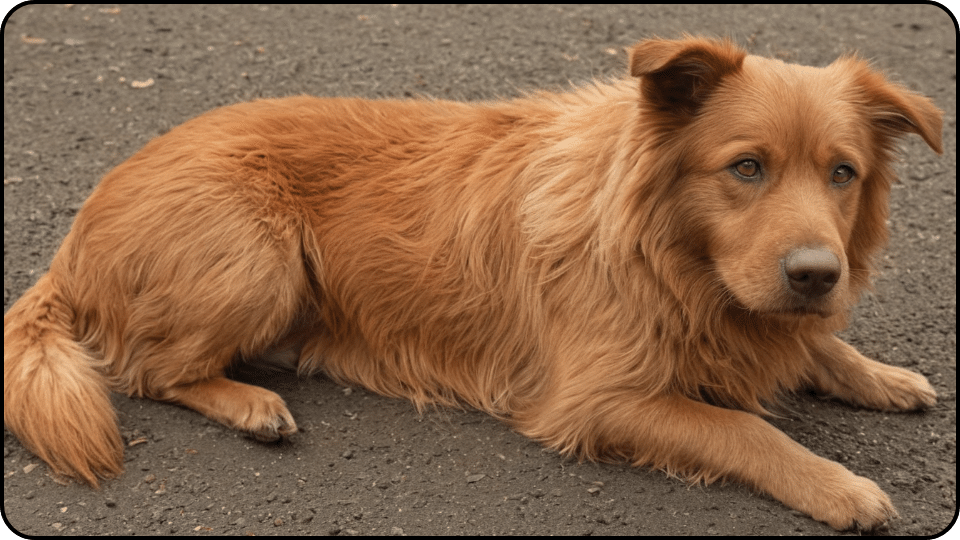
Understanding Dog Fur Color Changes
What Causes Dog’s Fur to Change Color?
A dog’s fur can change color due to various factors, including allergies, skin irritation, dental problems, genetics, and breed-specific traits. These changes are more than just cosmetic; they can signal underlying health issues that need attention. Understanding these factors is crucial for effective treatment and prevention.
Allergies and skin irritation are common culprits. Food allergies can lead to inflammation, causing your dog to lick or scratch excessively. This behavior often results in rust-colored fur staining. Environmental factors like pollen or dust mites can also trigger allergic reactions, leading to similar symptoms. Regular grooming and a balanced diet can help manage these issues. Additionally, a dog’s diet, particularly the role of amino acids, can significantly affect coat color. Deficiencies in amino acids can lead to changes in fur pigmentation and overall coat health, especially after dietary adjustments following treatments like cancer therapy.
Dental problems can also affect your dog’s coat color. Infections or gum disease can increase saliva production, leading to staining around the mouth. Similarly, tear duct issues can cause excessive tearing, resulting in discoloration around the eyes. Regular dental care and veterinary check-ups are essential to prevent these problems.
Genetics and breed-specific traits play a role, too. Some breeds, like Pugs and Bulldogs, are more prone to rust-colored staining due to their facial structure. Genetics can also influence coat color changes, making some dogs more susceptible. Regular grooming and veterinary care can help manage these changes effectively.
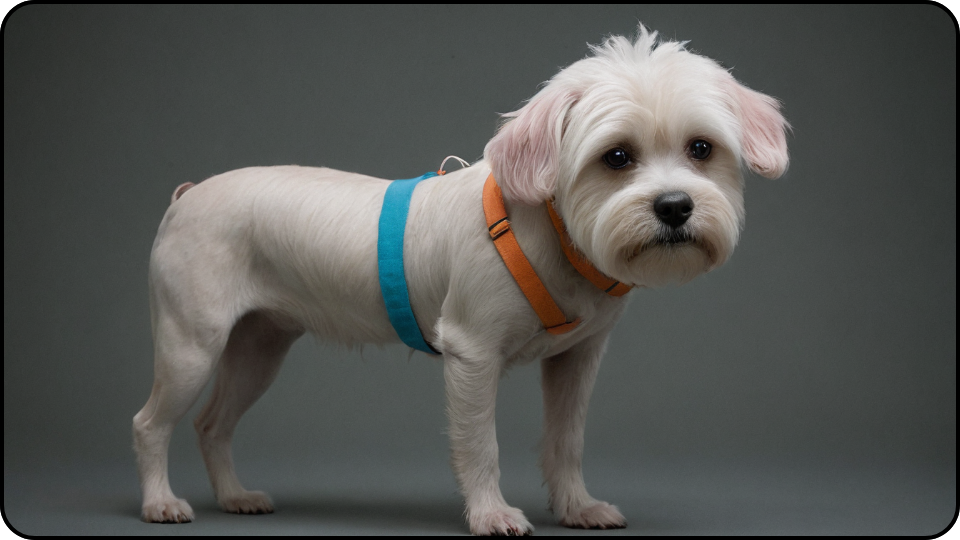
Causes of Rust-Colored Dog Fur
Allergies and Skin Irritation
Allergies can cause significant skin irritation in dogs, leading to excessive licking and chewing. This behavior often results in rust-colored fur staining, which is a common problem for many dog owners.
Food allergies are a primary culprit, as certain ingredients in dog food can trigger inflammatory responses. These reactions lead to itching and discomfort, prompting your dog to lick or chew their fur excessively. Environmental allergies, such as pollen, dust mites, or mold, can also irritate your dog’s skin, causing similar symptoms. It’s essential to identify and address these allergens to prevent further fur discoloration.
Skin infections can exacerbate the issue, as they often arise from continuous licking, creating a vicious cycle. Bacterial or fungal infections can develop in the moist areas of the skin, leading to further irritation and rust-colored staining. Regular vet visits and early detection are crucial for managing these conditions effectively.
To treat rust-colored fur in dogs, it’s important to identify and address the underlying allergy or skin issue. This may involve dietary changes, such as switching to hypoallergenic dog food or using medicated shampoos to soothe irritated skin. Consulting with a veterinarian can help develop a tailored treatment plan to restore your dog’s coat to its natural color and improve their overall well-being.
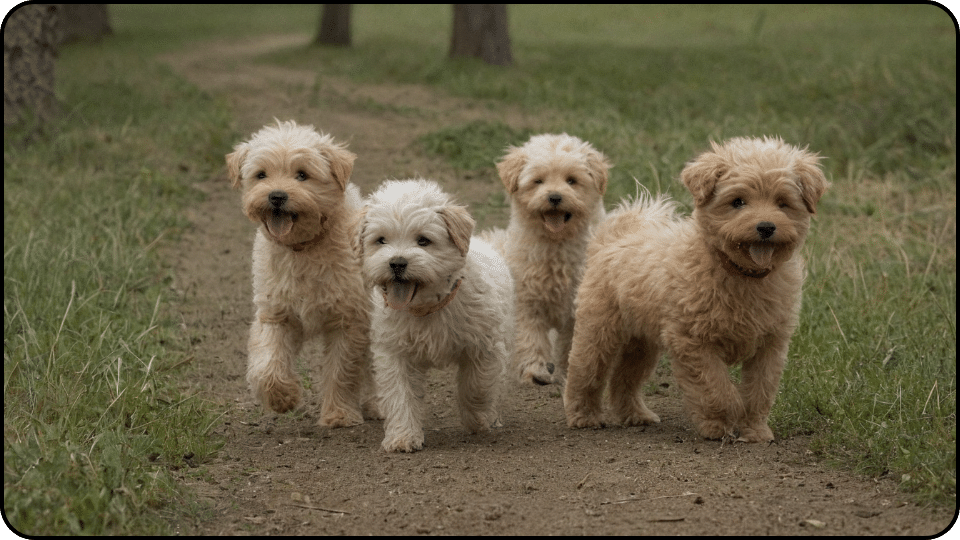
Dental Issues and Tears Duct Problems
Dental issues in dogs, such as gum disease and tooth infections, can cause excessive saliva production, leading to rust-colored fur staining around the mouth. This staining is often a result of increased saliva, which contains porphyrins—natural pigments that can discolor the fur. Porphyrin, a byproduct of the breakdown of red blood cells, leads to staining. Regular dental care is essential to prevent these issues. Cleaning your dog’s teeth and providing dental treats can reduce the risk of gum disease and infections.
Similarly, tear duct problems, such as blocked tear ducts, can cause excessive tearing in dogs. This leads to rust-colored fur staining around the eyes, as tears also contain porphyrins. Regularly cleaning the area around your dog’s eyes can help manage this issue. Using a clean cloth and warm water can gently remove tear stains. For persistent problems, consult a vet for potential treatments that do not irritate a dog’s eyes.
Regular veterinary check-ups are crucial for the early detection of dental issues and tear duct problems. These check-ups can help identify underlying health conditions that might be causing excessive saliva or tearing. A vet can recommend appropriate treatments, such as dental cleanings or eye drops, to address these issues. By maintaining regular vet visits, you can help ensure your dog’s coat remains healthy and free from rust-colored stains.
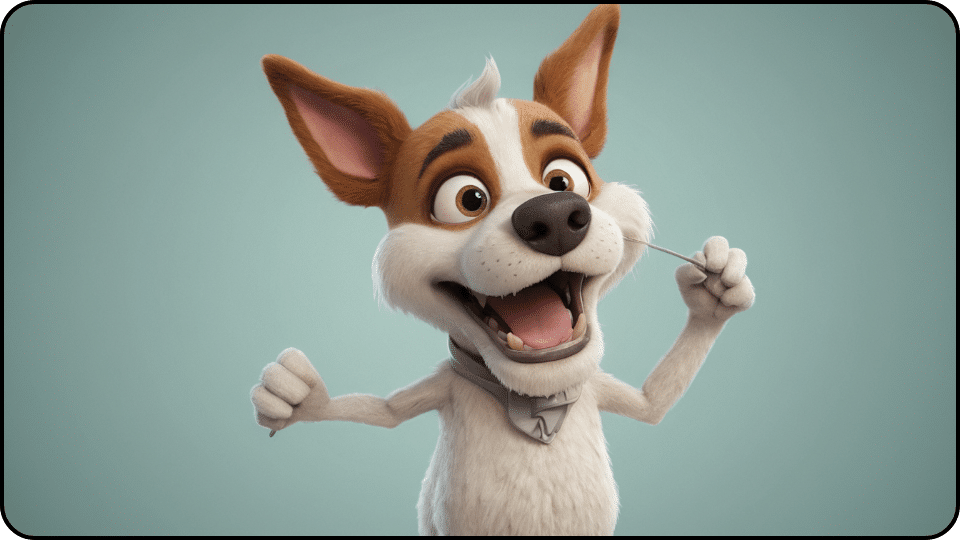
Genetics and Breed-Specific Traits
Certain dog breeds, such as Pugs, Boxers, and Bulldogs, are more prone to rust-colored fur staining. This is due to their unique facial structure and skin folds, which can trap moisture and lead to staining. The folds create a perfect environment for bacteria and yeast to thrive, causing discoloration over time. Regular cleaning of these areas can help manage the problem.
White dogs are particularly prone to fur turning rusty in color due to accumulated dirt and grass stains. Pet owners may be concerned about this issue, as it can also indicate underlying conditions causing the discoloration.
Genetics also play a significant role in a dog’s coat color changes. Some breeds have a natural predisposition to rust-colored fur staining. This can be due to the presence of higher levels of porphyrins, the pigments responsible for the discoloration. Understanding your dog’s genetic background can help you anticipate and manage potential coat color changes.
Regular grooming and veterinary care are essential for preventing rust-colored fur staining in these breeds. Grooming involves more than just brushing; it includes cleaning the folds and creases where moisture can accumulate. A well-groomed dog is less likely to suffer from skin infections and staining. Regular vet visits ensure any underlying health issues are detected early, allowing for prompt treatment. Maintaining a healthy diet and providing proper dental care can also support a vibrant, natural coat color.
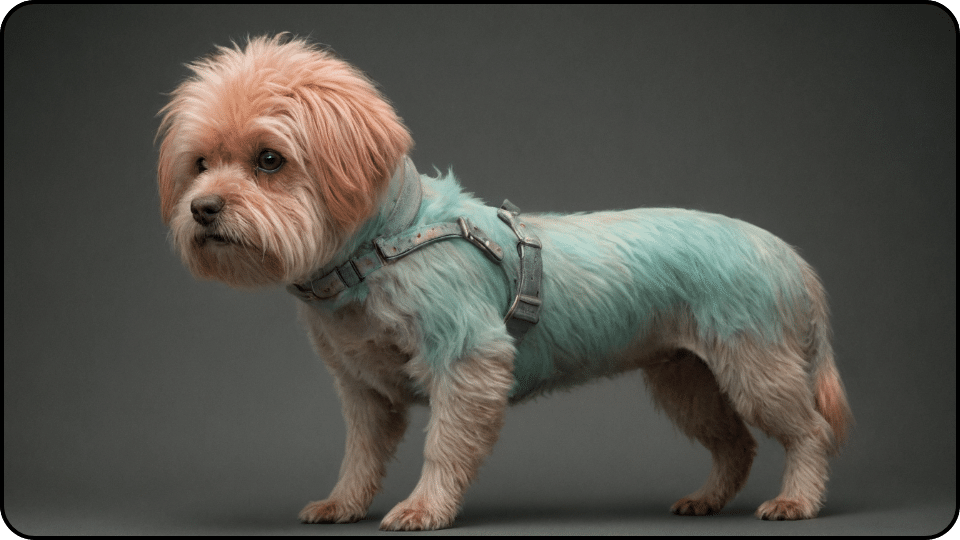
The Role of Porphyrins in Dog Fur Staining
Porphyrins are naturally occurring pigments found in a dog’s tears, saliva, and urine. These pigments can cause rust-colored fur staining in dogs, a common problem among many breeds. The staining occurs when porphyrins accumulate on the fur, resulting in pink or rusty-red discoloration.
Understanding the role of porphyrins in dog fur staining is crucial for developing effective treatment and prevention strategies. These pigments are particularly noticeable in areas where dogs frequently lick or tear, such as around the eyes, mouth, and paws. Excessive licking due to allergies or skin irritation can exacerbate the accumulation of porphyrins, leading to more pronounced staining.
To manage porphyrin stains, regular grooming is essential. Cleaning the affected areas with a dog-safe shampoo can help remove the stains. Additionally, using a clean cloth to gently wipe the areas around your dog’s eyes and mouth can prevent further accumulation. For persistent stains, specialized pet stain removers or a baking soda paste can be effective.
Preventive measures include maintaining a healthy diet and addressing any underlying health issues promptly. Consulting with a veterinarian can provide insights into dietary changes or treatments that can help reduce porphyrin production. Regular vet visits and early detection of allergies or infections can significantly minimize the risk of rust-colored staining.
Treating Rust-Colored Dog Fur
Topical Treatments and Shampoos
Topical treatments and shampoos can be effective solutions for managing rust-colored fur stains on dogs. These products not only help remove existing stains but also prevent further discoloration. By incorporating these into your dog’s grooming routine, you can maintain their coat’s natural color and shine.
Using a gentle dog shampoo and conditioner is essential for maintaining a healthy coat. These products are designed to clean without stripping away natural oils, which are vital for keeping the fur soft and vibrant. Regular use of such shampoos can help prevent the accumulation of porphyrins, the pigments responsible for rust-colored stains. For dogs with sensitive skin, hypoallergenic shampoos can be a great option.
Medicated shampoos and conditioners are particularly beneficial for treating underlying skin issues and allergies. These specialized products contain ingredients that soothe irritated skin and reduce inflammation. They can help break the vicious cycle of itching and licking, which often leads to fur staining. When selecting a medicated shampoo, consult with your veterinarian to ensure it’s suitable for your dog’s specific needs.
In addition to shampoos, there are topical treatments available that target specific areas of staining. These treatments can be applied directly to affected areas, such as around the eyes or mouth, where porphyrin stains are most common. By using a combination of shampoos and topical treatments, you can effectively manage fur discoloration and promote a healthy, natural coat color. Regular grooming, alongside these treatments, ensures your dog’s coat remains in top condition.
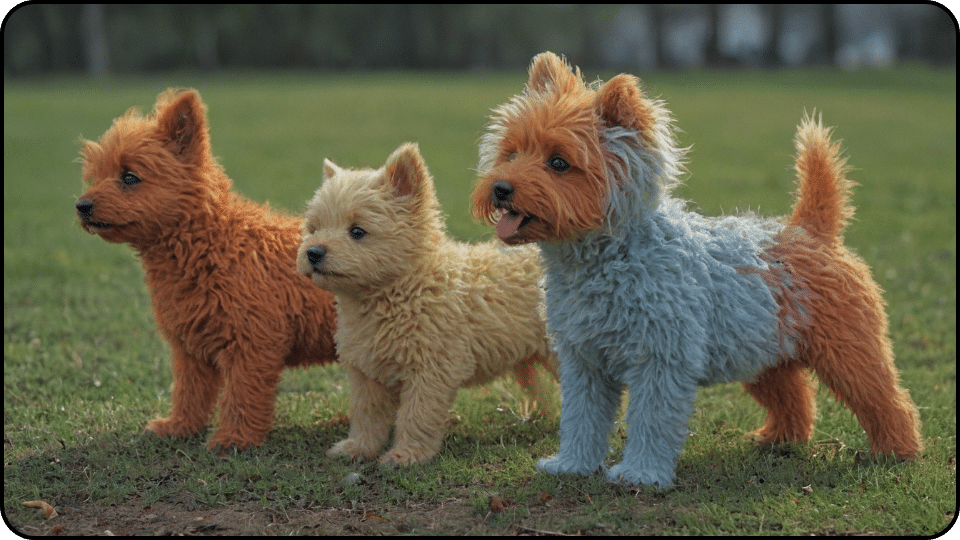
Dietary Changes for a Healthy Coat
A balanced diet rich in nutrients is essential for promoting a healthy coat and preventing rust-colored fur staining in dogs. Nutrition plays a crucial role in maintaining the natural color of your dog’s coat. Ensuring your dog receives all the necessary vitamins and minerals can make a significant difference.
Adding omega-3 fatty acids and vitamins to your dog’s diet can help reduce inflammation and support a vibrant coat. Omega-3s are known for their anti-inflammatory properties, which can alleviate skin irritation and reduce excessive licking. Vitamins such as A, E, and B-complex are vital for skin health and fur texture. Including these nutrients in your dog’s diet can enhance their coat’s shine and resilience.
Consulting with a veterinarian or canine nutritionist is beneficial for determining the best diet tailored to your dog’s specific needs. They can recommend high-quality dog food or supplements that provide the right balance of nutrients. Consider incorporating foods rich in natural oils, like fish or flaxseed, which are excellent sources of omega-3 fatty acids.
Maintaining a nutritious food regimen can prevent fur staining and support overall well-being. Regularly reviewing your dog’s diet with a professional ensures they are receiving the optimal nutrition for their coat health. By prioritizing a balanced diet, you can help restore your dog’s coat to its original color and prevent future discoloration.
Preventive Measures to Maintain a Healthy Coat
Regular Grooming Practices
Regular grooming practices, such as brushing and bathing, are essential for preventing rust-colored fur staining in dogs. These practices help maintain a dog’s healthy coat by removing loose hair and distributing natural oils. Regular grooming is not just about aesthetics; it plays a crucial role in identifying underlying skin issues and allergies early on.
Brushing your dog’s coat daily can prevent matting and tangles, which can trap moisture and lead to skin infections. A well-brushed coat allows the skin to breathe and promotes the distribution of natural oils, keeping the fur shiny and healthy. Regular baths with a gentle dog-safe shampoo can help remove dirt and debris, preventing the buildup of porphyrins that cause staining. Consider using hypoallergenic shampoos if your dog has sensitive skin.
Grooming sessions are also an excellent opportunity to check for signs of skin irritation, redness, or unusual lumps. Early detection of these issues can prevent more serious health problems down the line. It’s important to make grooming a positive experience for your dog, using treats and praise to reinforce good behavior.
Incorporating grooming into your routine can significantly improve your dog’s coat color and overall well-being. Keep a grooming schedule and stick to it. Use tools like combs, brushes, and grooming mitts to make the process efficient. Regular grooming, combined with a nutritious diet and regular vet visits, can help maintain your dog’s coat in its natural color and condition.
When to Consult a Vet
Signs of Underlying Health Issues
If your dog’s fur is turning rust color, it’s crucial to consult a veterinarian. This change could signify underlying health issues. Early intervention can prevent complications.
Signs to watch for include excessive licking, chewing, or scratching. These behaviors might indicate allergies, skin irritation, or dental issues. Pay attention to any changes in your dog’s behavior or coat.
Consulting a veterinarian can help identify the root cause. The vet may conduct tests to determine if allergies, infections, or other health conditions are present. They will develop an effective treatment plan tailored to your dog’s needs.
Treatment options might include dietary changes, topical treatments, or medications. Regular vet visits and grooming can maintain your dog’s coat health. Addressing the underlying issue is key to restoring their natural coat color.
Final Thought
Rust-colored fur staining is a common problem in dogs that can be caused by various factors, from allergies and skin irritation to dental issues and underlying health conditions. By understanding the causes and taking a proactive approach to treatment and prevention, including regular grooming, a healthy diet, and veterinary care, you can help keep your dog’s coat looking its best and promote their overall health and well-being. If you notice any changes in your dog’s fur color or other concerning symptoms, don’t hesitate to consult with a veterinarian for proper diagnosis and treatment.
FAQs
How do you get rust stains out of dog fur?
To remove rust stains from your dog’s fur, gently wash the affected area with a dog-safe shampoo and rinse thoroughly. For stubborn stains, you can apply a paste made of baking soda and water, letting it sit for a few minutes before rinsing. Regular grooming and maintaining a healthy diet can help prevent future staining.
Why is my dog’s fur turning reddish brown?
Your dog’s fur may be turning reddish brown due to porphyrin pigments found in tears and saliva, which stain the fur. This discoloration can be a result of excessive licking or tearing, often linked to allergies, skin irritations, or dental issues. Consulting a vet can help identify and treat the underlying cause.
How do you get rid of porphyrin stains on dogs?
To remove porphyrin stains from your dog’s fur, clean the affected areas with a dog-safe shampoo and rinse well. For persistent stains, use a baking soda paste or specialized pet stain removers. Regular grooming and addressing any underlying health issues can help prevent further staining.
Why does my dog’s fur look rusty?
Your dog’s fur may appear rusty due to the presence of porphyrins, natural pigments found in tears and saliva that can stain the coat. This discoloration is often linked to excessive licking, tearing, or underlying health issues like allergies or skin infections. Regular vet visits can help identify and treat the root cause, restoring your dog’s coat to its original color.
What is the importance of treating dog fur turning rust color?
Ensuring dogs receive the best care for their health is crucial. Rust-colored fur can be a sign of an underlying issue that needs immediate attention to prevent further complications. Beyond being inconvenient, such irritations can impact your pet’s behavior and overall quality of life. Identifying and addressing the root cause is essential to restore the natural color of your dog’s coat.
Should I worry about my dog’s fur changing color?
Porphyrin stains can be problematic. Significant staining, especially when accompanied by specific signs and behaviors, often signals an underlying medical condition that requires attention.
Why does white fur turn red?
In dogs with white, cream, or apricot coats, reddish fur is often noticeable around the eyes and feet. This change in coat color is influenced by several factors. Tears and saliva contain red-brown pigments known as porphyrins, which are responsible for the reddish tint. Persistent moisture can lead to bacterial growth in the fur, exacerbating the discoloration. Brown paws might also indicate potential allergies or skin conditions in dogs.
